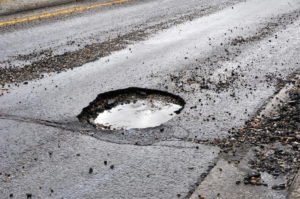
While driving when snow is melting is a good feeling, be aware of potholes. As the temperature freezes and thaws over and over, it can cause damage to the road. This damage results in a pothole forming on the surface of the road. You may not know what time of damage is done to your vehicle immediately, but there are several parts you should look at. An oil pan or oil sump’s main purpose is to form the bottom most part of the crankcase. It then contains the engine oil before and after it has been circulated through the engine. Since it is at the bottom end of the engine, the oil sump is exposed to being rubbed against humps and is also affected when vehicles hit potholes. Unfortunately, problems caused by potholes may be neglected because they may not affect the car’s movement.
Suspension system
The suspension system is the most susceptible part, whenever a car hits a pothole. The suspension of a car is actually part of the chassis, which comprises all of the important systems located beneath the car’s body. As you hit a pothole, the suspension can become damaged. Parts and components can get out of alignment or crack. If you do hit a pothole, especially at a higher rate of speed, make sure to bring the vehicle in. We can check the entire vehicle, including the frame and suspension of it. By having a suspension that is correct, you can have a more comfortable driving experience.
Check the tires
The tires can also be affected when you hit a pothole. You can cause the rim to bend or dent. If you hit the pothole at a higher speed, you can cause the tire to blow out. This can lead to a costly repair bill. When you drive make sure to try and avoid potholes the best that you can. This way you can help prevent issues with the structure of your vehicle.



